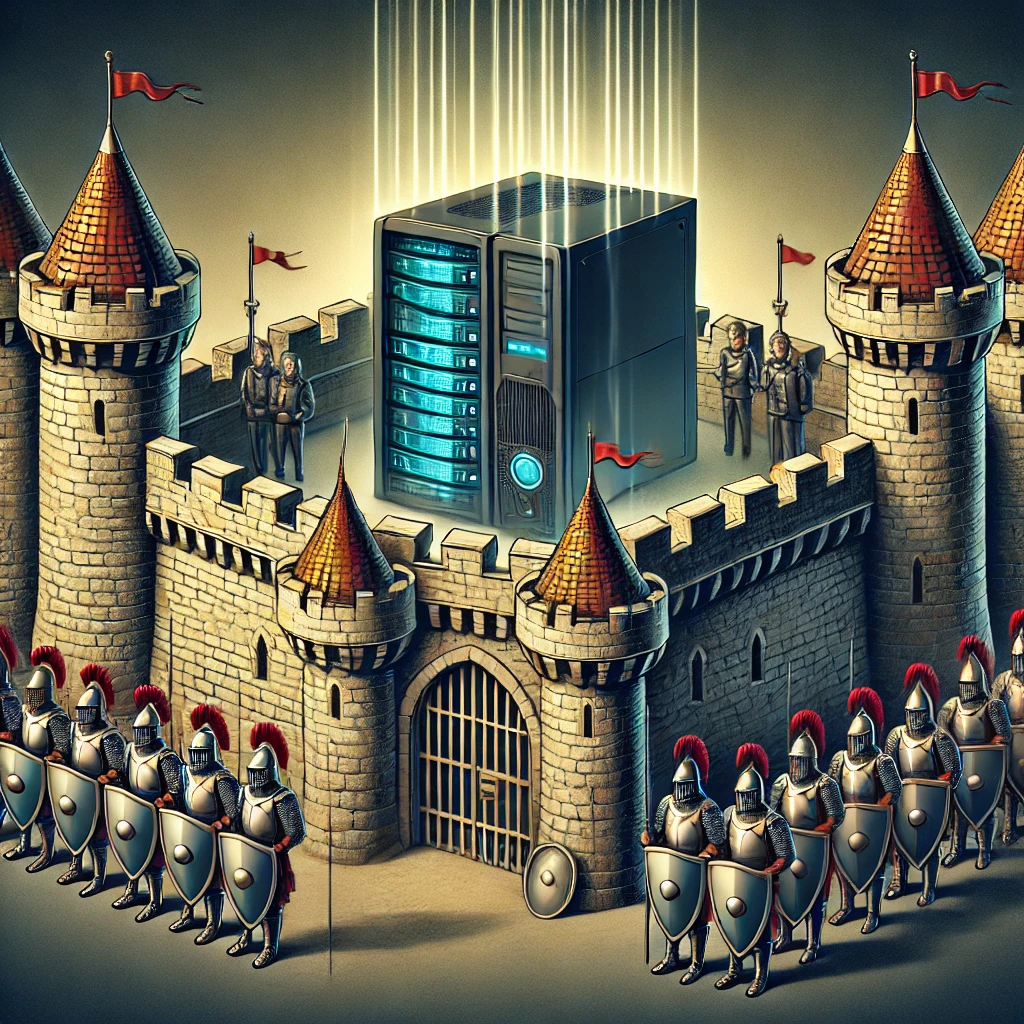
How Defense in Depth Will Save Your Business from Cybersecurity Breaches and Data Loss
From ransomware attacks to data breaches, businesses are facing ever-changing risks that can lead to severe financial losses, reputational damage, and operational disruptions. So, how can you protect your business from these threats? The answer lies in a comprehensive approach known as Defense in Depth.
But what exactly is Defense in Depth, and why is it so effective?
Understanding Defense in Depth
Defense in Depth is a cybersecurity strategy that involves layering multiple security measures across each aspect of your IT environment and organization’s practices. Instead of relying on a single line of defense, such as a firewall or antivirus software, Defense in Depth implements multiple layers of protection to create reduce risk and increase resiliency, improving your security posture.
People use the approach of Defense in Depth anytime they are trying to mitigate risk, even driving in a car we will employ multiple safety measures. A buckled seatbelt, an airbag, a non-distracted driver, and car insurance are all layers of protection to avoid risk and to also improve resiliency in the event of an accident.
When it comes to your business, Defense in Depth provides additional peace of mind that if one layer of defense is breached, the subsequent layers will still provide protection, reducing the overall risk to your business. This layered approach significantly increases the difficulty for attackers to infiltrate your systems, and minimizes the chances of a successful breach.
The Role of Redundancy
One key aspect of Defense in Depth is redundancy. In cybersecurity, redundancy means having backup systems and processes in place to ensure that your defenses remain intact even if one part fails. For example, if your primary firewall is compromised, a secondary firewall or intrusion detection system can step in to protect your network.
Redundancy is crucial because it adds an extra layer of protection, making it much harder for attackers to penetrate your defenses. It’s like having a safety net that catches any threats that slip through your primary security measures.
NIST Cybersecurity Framework: The Gold Standard
Another essential component of a strong Defense in Depth strategy is adhering to the NIST Cybersecurity Framework (CSF). The NIST CSF provides a structured approach to managing and reducing cybersecurity risks. By following this framework, businesses can ensure that their security practices are comprehensive and aligned with industry best practices.
The NIST CSF is organized into five core functions: Identify, Protect, Detect, Respond, and Recover. These functions guide organizations in creating a holistic security strategy that addresses every aspect of cybersecurity, from risk assessment to incident response.
Layers of Defense in Depth
To implement Defense in Depth effectively, it’s crucial to understand the different layers involved. These layers span various aspects of your IT environment, from the perimeter, to your people, to the data itself.
1. Perimeter Security
The first line of defense is your perimeter security, which includes technologies like Zero Trust Network Access (ZTNA) and Security Awareness Training.
- Zero Trust Network Access (ZTNA): Unlike traditional security models that trust users once they’re inside the network, ZTNA assumes that no user or device is trustworthy by default. It requires continuous verification of access rights, ensuring that only authorized users can access your network.
- Security Awareness Training: Your employees are often the first targets of cyberattacks. Educating them on recognizing phishing attempts, avoiding social engineering tactics, and practicing safe online behavior is essential for preventing breaches.
2. Network Security
Once inside the perimeter, network security plays a vital role in protecting your internal systems.
- Firewalls: These act as gatekeepers, monitoring incoming and outgoing traffic based on predetermined security rules.
- Monitoring & Logging: Continuous monitoring and logging of network activities help detect suspicious behaviors in real-time, allowing you to respond quickly to potential threats.
3. Host/Endpoint Security
Individual devices, or endpoints, are often the most vulnerable entry points for attackers.
- Endpoint Detection and Response (EDR): EDR solutions monitor and respond to threats at the endpoint level, providing a critical layer of defense against malware, ransomware, and other attacks targeting devices.
4. Application Security
Protecting the applications your business relies on is equally important.
- Application Control: This ensures that only authorized applications can run within your environment, reducing the risk of malicious software being installed and executed.
5. Data Security
The final layer focuses on safeguarding one of your most valuable assets—your data.
- Backups: Regular data backups are essential for quick recovery in case of a breach. Ensuring that your backups are secure and regularly tested can prevent data loss and minimize downtime.
Are you ready to strengthen your business’s cybersecurity strategy? Join us for our upcoming webinar, “How Defense in Depth Will Save Your Business From Cybersecurity Breaches and Data Loss,” hosted by Snap Tech IT’s experts, Ted Hulsy and Chuck Wiley.
We’ll take you deeper into each of these layers, providing you with actionable insights to protect your business from evolving cyber threats. Don’t miss this opportunity to learn how to implement a robust Defense in Depth strategy tailored to your organization’s needs.

Nathan Caldwell
Marketing expert, thought leader, speaker, and security awareness solution creator.